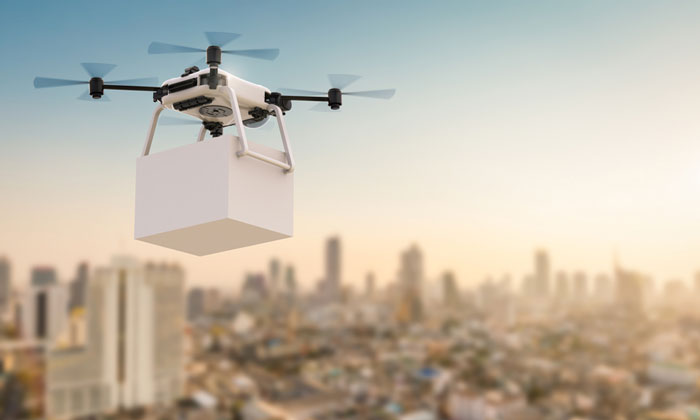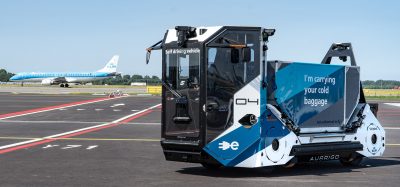U.S. selects candidates for pilot scheme integrating drones into national airspace
- Like
- Digg
- Del
- Tumblr
- VKontakte
- Buffer
- Love This
- Odnoklassniki
- Meneame
- Blogger
- Amazon
- Yahoo Mail
- Gmail
- AOL
- Newsvine
- HackerNews
- Evernote
- MySpace
- Mail.ru
- Viadeo
- Line
- Comments
- Yummly
- SMS
- Viber
- Telegram
- Subscribe
- Skype
- Facebook Messenger
- Kakao
- LiveJournal
- Yammer
- Edgar
- Fintel
- Mix
- Instapaper
- Copy Link
Posted: 17 May 2018 | International Airport Review | No comments yet
Over the next two and a half years, the selectees will collect drone data involving night operations, flights over people and beyond the pilot’s line of sight, package delivery, detect-and-avoid technologies and the reliability and security of data links between pilot and aircraft.


SPECIAL DELIVERY: According to AUVSI, in the first three years of integration more than 70,000 jobs will be created in the United States with an economic impact of more than $13.6 billion
U.S. Secretary of Transportation Elaine Chao has announced that her department has selected 10 state, local and tribal governments as participants in the Unmanned Aircraft Systems (UAS) Integration Pilot Program.
First publicised last October, this White House initiative partners the Federal Aviation Administration (FAA) with local, state and tribal governments, which then partner with private sector participants to safely explore the further integration of drone operations.
“Data gathered from these pilot projects will form the basis of a new regulatory framework to safely integrate drones into our national airspace.” said Secretary Chao.
The 10 selectees are:
- Choctaw Nation of Oklahoma, Durant, OK
- City of San Diego, CA
- Innovation and Entrepreneurship Investment Authority, Herndon, VA
- Kansas Department of Transportation, Topeka, KS
- Lee County Mosquito Control District, Ft. Myers, FL
- Memphis-Shelby County Airport Authority, Memphis, TN
- North Carolina Department of Transportation, Raleigh, NC
- North Dakota Department of Transportation, Bismarck, ND
- City of Reno, NV
- University of Alaska-Fairbanks, Fairbanks, AK
“The enthusiastic response to our request for applications demonstrated the many innovative technological and operational solutions already on the horizon,” added Secretary Chao.
The programme is aimed at providing certainty and stability to communities, drone owners and the rapidly evolving drone industry. In less than a decade, the potential economic benefit of integrating UAS in the nation’s airspace is estimated at $82 billion and could create 100,000 jobs.
The Department of Transportation (USDOT) and its FAA carefully evaluated each of the 149 proposals they received according to the requirements outlined in a Screening Information Request. The 10 final selectees will now work with the FAA to refine their operational concepts through Memorandums of Agreement (MOAs). The MOAs will establish the parties’ responsibilities, describe specific concepts of operations they will undertake, establish any data-sharing requirements, and specify that no federal funds will be spent on the programme.
Over the next two and a half years, the selectees will collect drone data involving night operations, flights over people and beyond the pilot’s line of sight, package delivery, detect-and-avoid technologies and the reliability and security of data links between pilot and aircraft.
The data collected from these operations will help the USDOT and the FAA craft new enabling rules that allow more complex low-altitude operations, identify ways to balance local and national interests related to UAS integration, improve communications with local, state and tribal jurisdictions, address security and privacy risks, and accelerate the approval of operations that currently require special authorisations.
Fields that could see immediate opportunities from the programme include commerce, photography, emergency management, public safety, precision agriculture and infrastructure inspections.
According to Association for Unmanned Vehicle Systems International (AUVSI), in the first three years of integration more than 70,000 jobs will be created in the United States with an economic impact of more than $13.6 billion. This benefit will grow through 2025 when they foresee more than 100,000 jobs created and economic impact of $82 billion.
Related topics
Air traffic control/management (ATC/ATM), Airside operations, Drones, New technologies


















